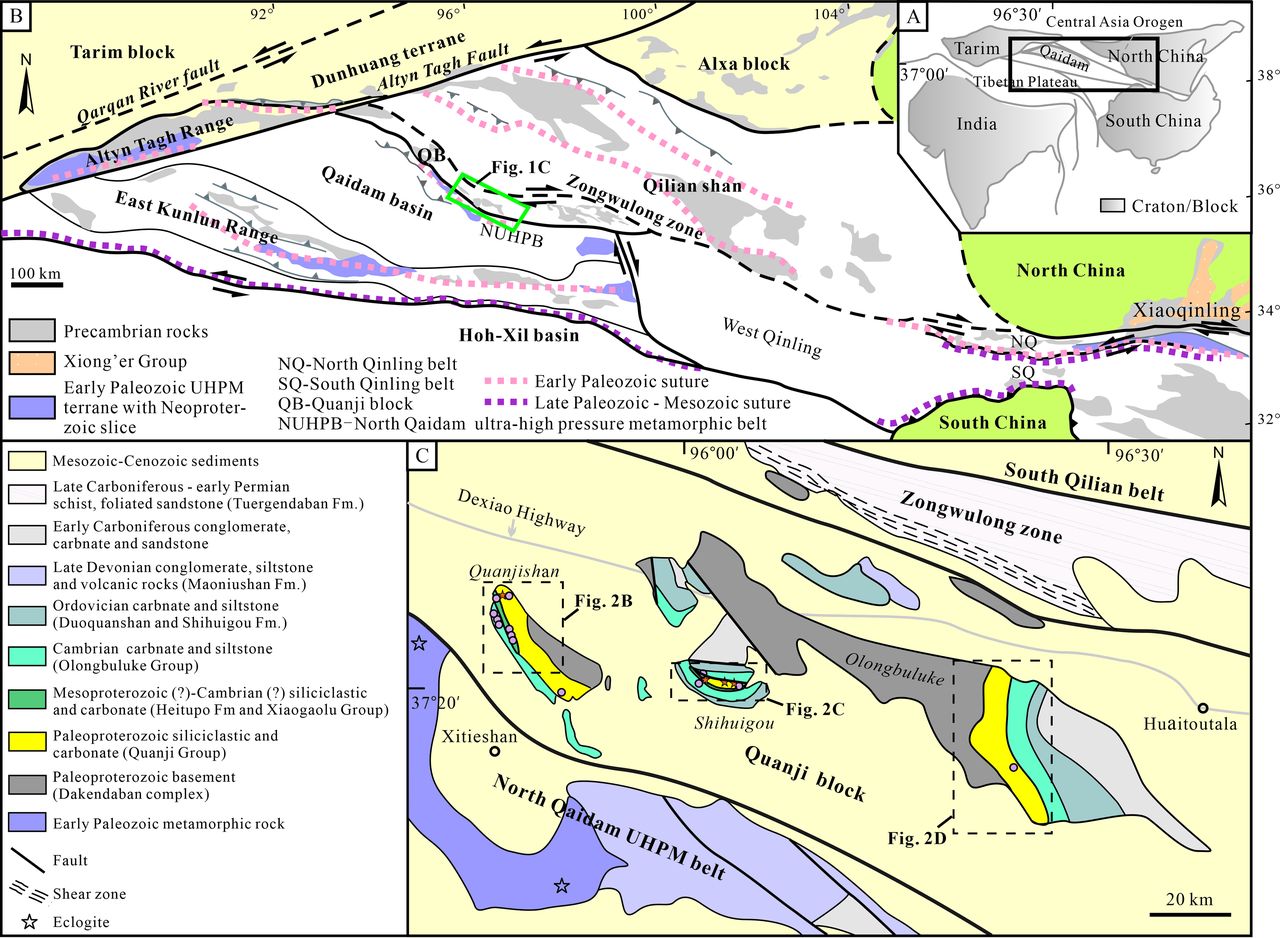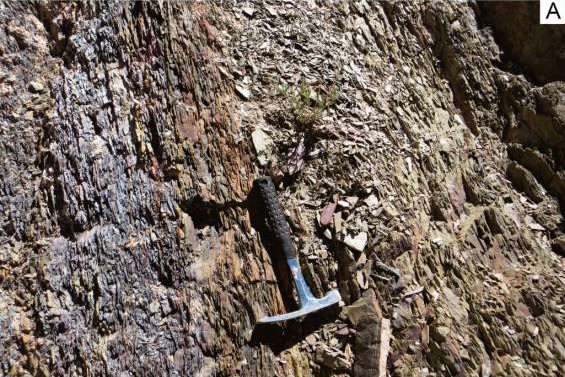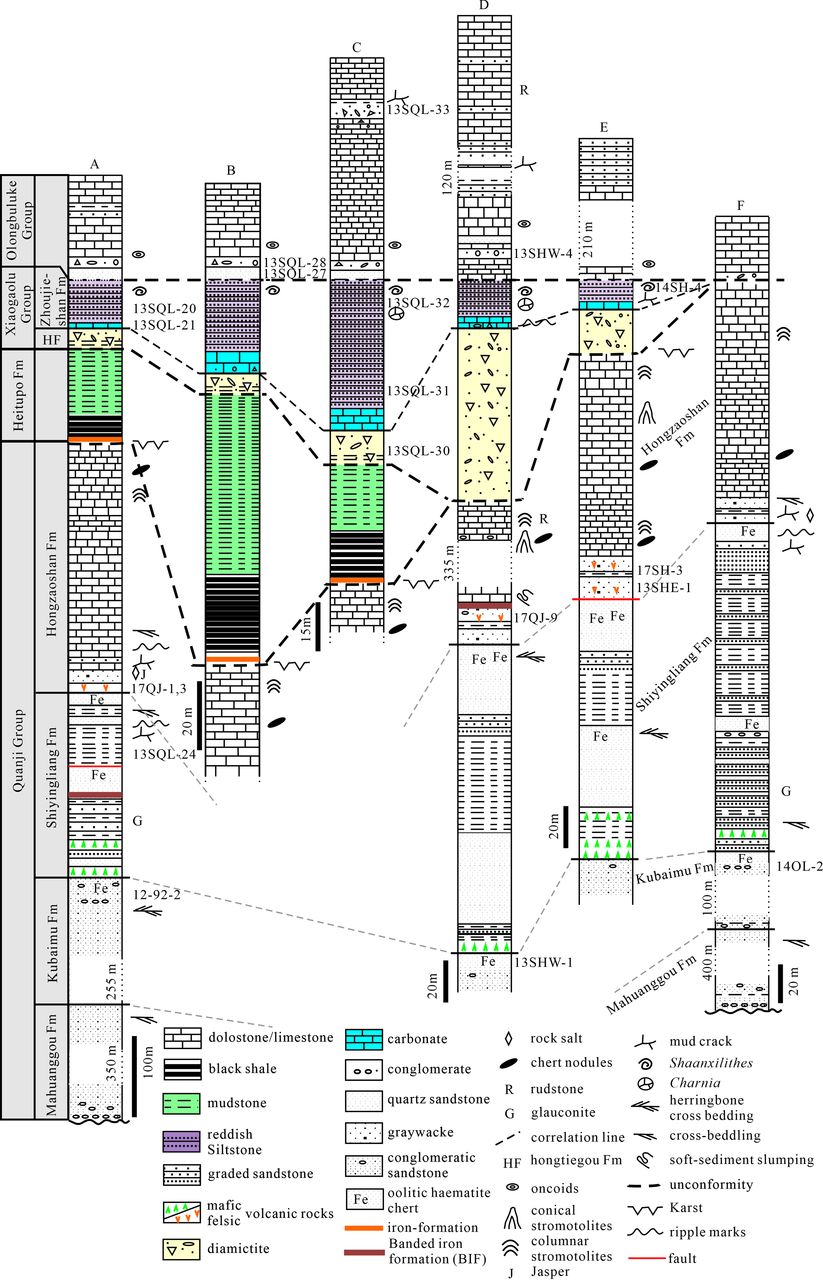Heitupo Fm
Type Locality and Naming
Type section of Heitupo Formation is the Quanjishan section, located at Heitupo of Quanjishan Mountain in Hongtiegou Village, Da Qaidam, Haixi Prefecture, Qinghai Province (95°51’E, 37°25’N). The section lies about 60 km southeast of Da Qaidam Town, and was remeasured by Wang Yunshan and Chen Jiliang from Qinghai Institute of Geological Sciences in 1983. It is the lower portion of the same type section shared by the overlying Hongtiegou and Zhoujieshan formations, which embrace the Bed 4‒6 and Bed 7‒10 respectively, while the Heitupo Formation embraces the Bed 1‒3. In the type section, the formation is over 123.40 m thick. The Heitupo Formation was named by Wang et al. (1980). The name is derived from Heitupo hillside on the Quanjishan Mountain in Da Qaidam Township, Haixi Mongolian and Tibetan Autonomous Prefecture, Qinghai Province. This formation spans the Ediacaran-Cambrian boundary.
Synonym:
Lithology and Thickness
The Heitupo Formation is a clastic sequence. The formation includes the lower three beds of the Quanjishan type section (Bed 1 to 3), from bottom up: 1, yellowish, thin- to moderately thick-bedded micritic dolomite and grey, thin-bedded clay slate (11.90 m thick); 2, greyish black carbonaceous slate, clay slate, intercalated with fine-grained sandstone (78.50 m); and 3, yellowish green and light gray argillaceous siltstone (33.00 m).
Relationships and Distribution
Lower contact
The Heitupo Formation rests disconformably on the Hongzaoshan Fm of the Ediacaran System. The lower boundary of the formation is defined by the plane of disconformity.
Upper contact
It is overlain disconformably by the glacial conglomerate of the Hongtiegou Fm. The upper boundary of the formation is defined by the plane of disconformity.
Regional extent
The Heitupo Formation is exposed in the Qaidam Area of the Qaidam -Qilian-Alexa Region, restricted mainly in the Quanjishan area. The formation is stable in lithology, and is thinning eastward.
GeoJSON
Fossils
In the type section, the middle part yields scolecodonts, worm fragments, and rich micro-paleoplant fossils Microhystridium sp., Orygmatosphaeridium sp., Symplassosphaeridium sp., Taeniatum crassum, and Trematosphaeridium holtedahlii etc.
Age
Depositional setting
The formation represents oxidizing supratidal palustrine setting.
Additional Information


